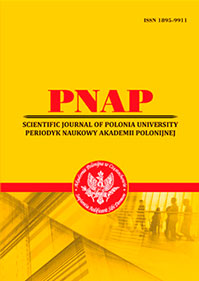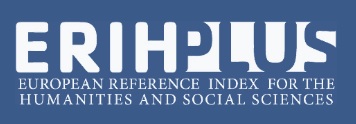ТИПИ АБРЕВІАТУР У МЕЖАХ МЕДИКО-ФАРМАЦЕВТИЧНОЇ ТЕРМІНОСИСТЕМИ АНГЛІЙСЬКОЇ МОВИ
Анотація
У статті проаналізовано типологію вживання абревіатур на позначення медич- них і фармацевтичних понять у професійних терміносистемах. Метою нау- кової розвідки є визначення найуживаніших моделей таких термінологічних одиниць у відповідних галузях й опис специфіки їх можливих класифікацій на базі комплексного аналізу. З огляду на необхідність прицільного вивчення цієї частини професійного словника англійської мови для адекватного розшифро- вування змісту й функціонального потенціалу скорочень, у роботі запропоно- вано їх класифікацію за тематичним критерієм, за формальним вираженням і за значенням. Увагу акцентовано на дослідженні лексичних абревіативних одиниць, оскільки за результатами аналізу дібраного мовного матеріалу визна- чено, що вони є найбільш уживаними (порівняно з графічними). З’ясовано, що в медичній і фармацевтичній галузях (як у практичному засто- суванні в історіях хвороб, так і в теоретичній базі, відображеній у наукових розвідках і довідковій літературі) абревіації підлягають поняття на позначення таких категорій, як назви й опис хвороб, номінація анатомічних структур і фізіологічних показників, лікувальні й діагностичні процедури, мовні одиниці на позначення лікувальних установ, медичного обладнання, статусу медич- ного працівника і хворого, абревіація в професійних програмах і стандартах. Доведено, що серед дібраних методом суцільної вибірки абревіатур кількісно переважають ініціальні, що стисло передають значення багатокомпонентних лексичних одиниць, виходячи з їх функціонального призначення раціоналізу- вати й оптимізувати фахову мовленнєву діяльність. Вони представлені алфа- вітизмами, акронімами й змішаними скороченнями, причому виявлено, що останні є досить незначною кількісною групою. Визначено, що в синонімічному шарі цих професійних контекстів вживаними є як повні синоніми, так і неповні, з кількісною перевагою останніх. Наявним є явище антонімії, особливо на позначення фізіологічних показників тіла й клі- нічних виявів хвороб. З’ясовано, що надзвичайно поширеними є полісемія, а також омонімія англійських абревіатур, що в разі перекладу рідною мовою реципієнта є проблемою для адекватного тлумачення змісту цільових одиниць.
Посилання
2. Барбашева С.С. Авраменко А.А. Особенности перевода аббревиатур в англоязычном медицинском тексте. Известия Самарского научного центра Российской академии наук. Том 13 № 2 (40) (4). Самара, 2011. С. 911–916.
3. Бирюкова Е.А. Функционирование аббревиатур в современной речи : дис. … канд. филол. наук. М. 2001. 309с.
4. Зубова Л.Ю. Английские медицинские аббревиатуры как часть профессиональной языковой картины мира : на фоне их русских и французских аналогов : дис. … канд. филол. наук : 10.02.04. Воронеж, 2009.
5. Кочарян Ю.Г. Аббревиация в английской военной лексике : автореф. дис. … канд. филол. наук. Москва, 2007. 17 с.
6. Кукаріна А.Д. Способи перекладу абревіатур в англомовному та україномовному медичному дискурсі : дис.…канд. філол. наук: 10.02.16 / Нац. б-ка України ім. В.І. Вернадського, Київ, 2017.
7. Сегаль М. Аббревиации и аббревиатуры в современном английском языке : дис. ... канд. филол. наук. Ленинград, 1994. 176 с.
 ISSN
ISSN 


.png)



